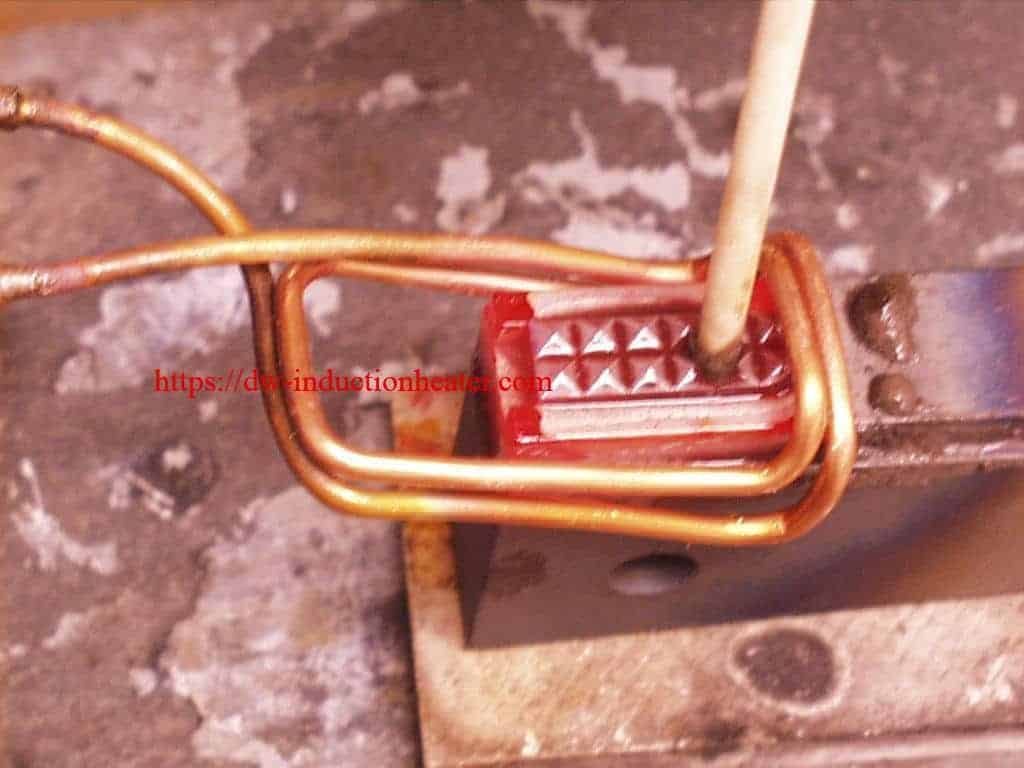Brazing Silver To Copper With Induction
Objective: Heat silver contacts and brass/copper bus for brazing application
Material: Silver contact .75 (19mm) diameter, brass and copper bus 2” x 1” (50.8 x 25.4mm), braze shims, white flux
Temperature 1300 ºF (704 ºC)
Frequency 300 kHz
Equipment • DW-UHF-10kW induction heating system, equipped with a remote workhead containing two 1.0μF capacitors for a total of 0.5 μF
• An induction heating coil designed and developed specifically for this application.
Process A five turn split helical coil is used to heat the assembly. The parts are placed 90º to the coil between the top turn and second turn with braze shims and flux. The parts reach 1300ºF (704 ºC) in less than 40 seconds to braze the parts together.
Results/Benefits Induction heating provides:
• Hands-free heating that involves no operator skill for manufacturing
• Better joint quality
• Faster heating cycles, more consistent results
• Even distribution of heating

